To cover the sides of a window air conditioner, you can use foam weatherstripping or insulating panels.
For this reason, you have a window air conditioner side panel kit to cover the sides of your window air conditioner.
Page Contents
- 1 Step By Step Guide To How to Cover Sides of Window Air Conditioner
- 1.1 Step 1: Measure the Dimensions Of The Air Conditioner
- 1.2 Step 2: Cut the Covering Material To The Appropriate Size
- 1.3 Step 3: Attach the Covering Material To The Sides Of The Air Conditioner
- 1.4 Step 4: Secure the Covering Material In Place
- 1.5 Step 5: Test the Airflow And Functionality Of The Air Conditioner
- 2 Why You Should Covering Sides of Window Air Conditioner
- 3 Types Of Materials For Covering Sides -Window Air Conditioner Side Panel Kit
- 4 Tips For Maintaining The Covered Sides Of Window Air Conditioner
- 5 Additional Considerations For Covering Sides Of Window Air Conditioner
- 6 How & Why Cover Window Air Conditioner
- 7 Final Verdict
Step By Step Guide To How to Cover Sides of Window Air Conditioner
Covering the sides of your window air conditioner is a simple and effective way to prevent drafts and insulate your home.
Not only does this help improve the efficiency of your cooling system, but it also adds an extra layer of protection against the elements.
In this step-by-step guide, we will walk you through the process of covering the sides of your window air conditioner to ensure a snug and secure fit.
Step 1: Measure the Dimensions Of The Air Conditioner
The first step in covering the sides of your window air conditioner is to accurately measure its dimensions.
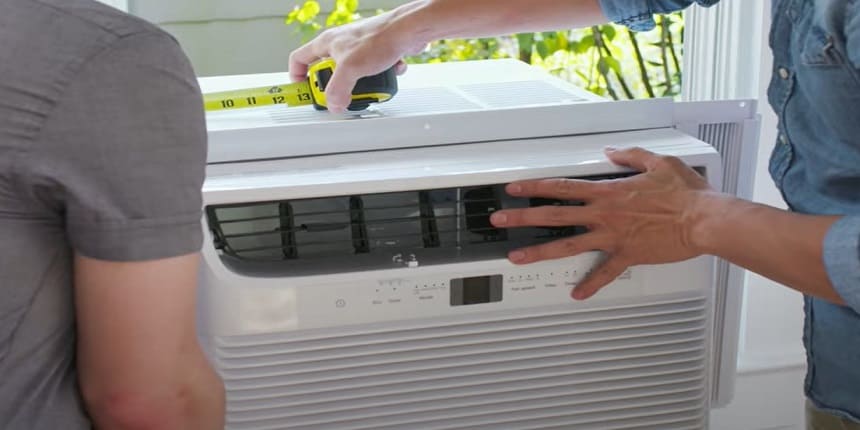
This will help you determine the size of the covering material you will need. Grab a tape measure and measure the height, width, and depth of the air conditioner. Write down these measurements so you can refer to them later.
Step 2: Cut the Covering Material To The Appropriate Size
Once you have the measurements, it’s time to cut the covering material to the appropriate size.

Look for a sturdy and weather-resistant material that can withstand the outdoor elements. PVC or outdoor fabric are popular choices. Using your measurements as a guide, mark the material and use a pair of sharp scissors or a utility knife to cut it to the correct size. Be sure to leave some extra material for an overlap.
Step 3: Attach the Covering Material To The Sides Of The Air Conditioner
With the covering material cut to size, it’s time to attach it to the sides of the air conditioner.

Start by positioning the material on one side of the air conditioner and aligning it with the edges. Use weather-resistant adhesive or double-sided tape to secure the material in place. Press firmly to ensure a strong bond. Repeat this step for the other side of the air conditioner.
Step 4: Secure the Covering Material In Place
Once the covering material is attached to both sides of the air conditioner, it’s important to secure it in place to prevent it from shifting or coming loose.
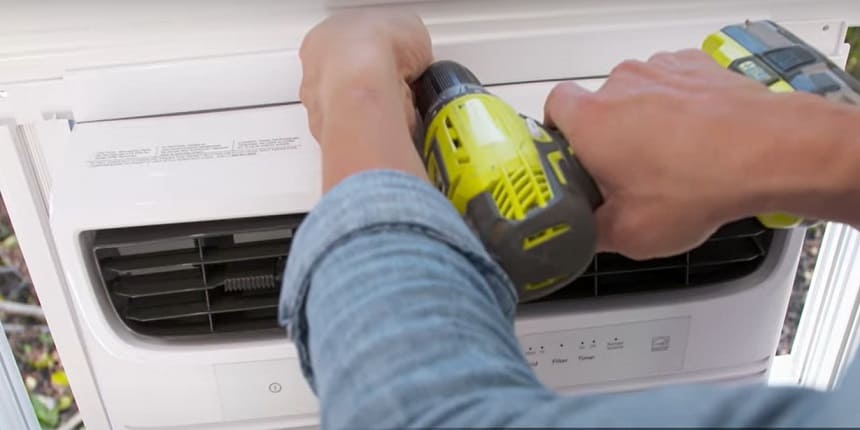
You can use small clips or clamps to hold the material in place along the edges. Be careful not to obstruct any vents or openings on the air conditioner. The covering material should be taut and snug to achieve optimum insulation.
Step 5: Test the Airflow And Functionality Of The Air Conditioner
After securing the covering material, it’s crucial to test the airflow and functionality of the air conditioner. Turn on the unit and feel for any air leaks or restrictions. Ensure that the air is flowing freely and evenly. If you notice any issues, adjust the covering material accordingly. It should not impede the performance of the air conditioner in any way.

By following this step-by-step guide, you can easily cover the sides of your window air conditioner and enjoy a more comfortable and energy-efficient living space.
Remember to measure accurately, cut the covering material to the appropriate size, attach it securely, and test the air conditioner’s functionality. With these simple steps, you can enhance the insulation of your air conditioner and improve its overall performance.
Why You Should Covering Sides of Window Air Conditioner
Are you tired of seeing the unsightly gaps and exposed sides of your window air conditioner?
If you want to give your AC unit a more polished and finished look, then covering the sides is an excellent solution.
Importance Of Covering Sides of Window Air Conditioner
When it comes to window air conditioners, the sides often get overlooked. However, covering the sides can offer various advantages. Here are a few reasons why it is essential:
Prevents air leakage: By covering the sides of your AC unit, you can prevent air leakage, ensuring that your air conditioner operates at maximum efficiency. This not only helps you maintain a consistent temperature but also reduces energy wastage.
Improves aesthetics: A window air conditioner with exposed sides can look unsightly and disrupt the overall appearance of your room or window. By covering the sides, you can achieve a more sleek and cohesive look, enhancing the aesthetics of your space.
Reduces noise: Another advantage of covering the sides is noise reduction. The insulation provided by the cover helps to block out external noise, allowing you to enjoy a peaceful and quiet living environment.
Protects from debris: Outdoor elements like rain, dust, and debris can find their way into the gaps around your air conditioner’s sides, which can lead to clogging and damage over time. Covered sides act as a protective barrier, preventing these unwanted elements from entering.
Benefits Of Covering Sides of Window Air Conditioner
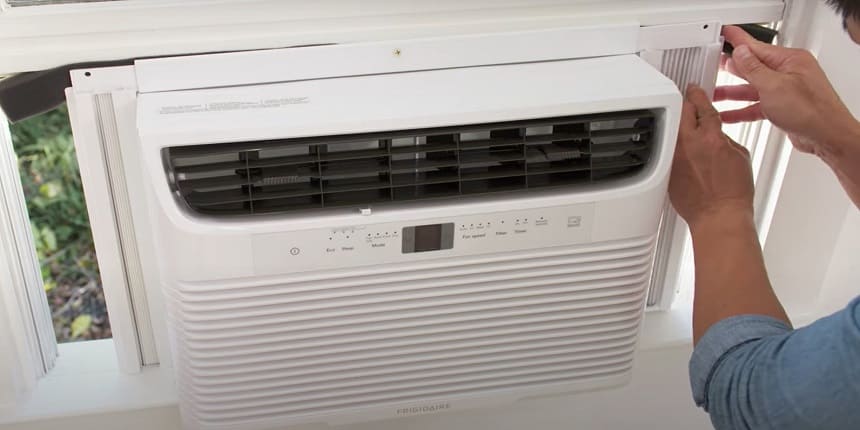
Covering the sides of your window air conditioner offers a range of benefits that go beyond the aesthetic appeal. Let’s take a closer look:
Enhanced energy efficiency: When you cover the sides, you create a sealed environment, minimizing air leakage. This means your air conditioner doesn’t have to work as hard to regulate the temperature, resulting in increased energy efficiency and reduced utility bills.
Extended lifespan: By protecting your air conditioner from the elements, covering the sides can help prolong its lifespan. Rain, snow, and direct sunlight can all cause damage, but with a cover, you can shield your unit and keep it in optimal condition for longer.
Simplified cleaning and maintenance: Covered sides not only prevent debris from entering your AC unit but also make it easier to clean and maintain. You won’t have to worry about reaching into small gaps and crevices as the cover provides a barrier, keeping the internals of your air conditioner cleaner for longer.
Reduced indoor humidity: When air leaks occur around the sides of your window air conditioner, warm and humid air from outside can seep into your room. By covering the sides, you can minimize this infiltration, helping to maintain a comfortable indoor humidity level.
Types Of Materials For Covering Sides -Window Air Conditioner Side Panel Kit
When it comes to covering the sides of your window air conditioner, there are several materials to choose from.
Each type of material offers its own set of advantages and disadvantages. In this area, we will explore three popular options: plastic covers, fabric covers, and insulating foam boards.
Plastic Covers
Plastic covers are a common choice for covering the sides of a window air conditioner. They are lightweight, easy to install, and provide a durable barrier against the elements.
These covers are typically made of sturdy materials, such as PVC or acrylic, which can withstand various weather conditions.
Plastic covers are also resistant to mold and mildew, making them a hygienic option for protecting your air conditioner.
Fabric Covers
Fabric covers offer a more flexible and aesthetic option for covering the sides of your window air conditioner.
These covers are usually made of weather-resistant fabric, such as polyester or canvas, and are designed to fit snugly over the air conditioner unit.
Fabric covers not only protect against dust, debris, and sunlight but also add a decorative touch to your home. They come in a variety of colors and patterns to suit your style.
Insulating Foam Boards
Insulating foam boards are an excellent choice if you are looking to improve energy efficiency and reduce noise levels.
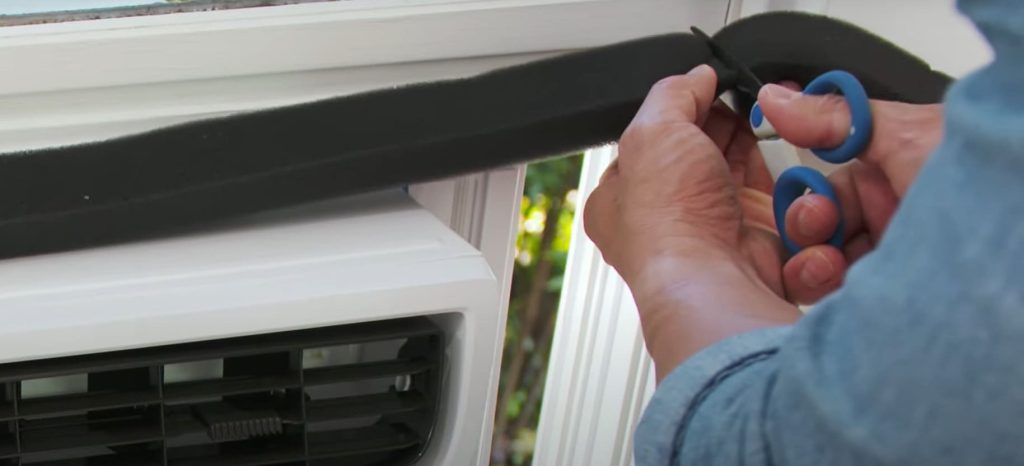
These boards are made of lightweight and rigid foam insulation, such as expanded polystyrene (EPS) or polyisocyanurate (PIR), which minimize heat transfer and sound transmission.
Insulating foam boards create a tight seal around the sides of your air conditioner, preventing warm air from entering your home and reducing the workload on the unit.
They are also easy to cut and shape, allowing for a customized fit.
Tips For Maintaining The Covered Sides Of Window Air Conditioner
If you have a window air conditioner, you know how important it is to keep it running smoothly.
While most of us focus on cleaning the air filters and maintaining the cooling efficiency, it’s equally important to pay attention to the covered sides of the unit.
The covering material plays a crucial role in protecting the internal components from dust, moisture, and other external elements.
Regular Cleaning And Maintenance
To keep the covered sides of your window air conditioner in the best condition, regular cleaning and maintenance are vital.
Dust, pollen, and other debris can accumulate on the covering material over time, affecting its overall appearance and functionality. Here are some steps you can follow:
- Start by unplugging the air conditioner and removing any loose debris from the covering material using a soft brush or a handheld vacuum cleaner.
- Mix a solution of mild dish soap and warm water in a bucket.
- Dip a soft cloth or sponge into the soapy solution and gently scrub the covering material, paying attention to any stubborn stains or dirt spots.
- Rinse the cloth or sponge thoroughly and wipe away the soap residue from the covering material.
- Allow the covering material to dry completely before plugging in the air conditioner again.
By following these steps regularly, you can keep the covered sides of your window air conditioner clean and free from dirt or grime buildup, ensuring its longevity.
Check For Any Damage Or Wear
Over time, the covering material of your window air conditioner may develop cracks, tears, or signs of wear.
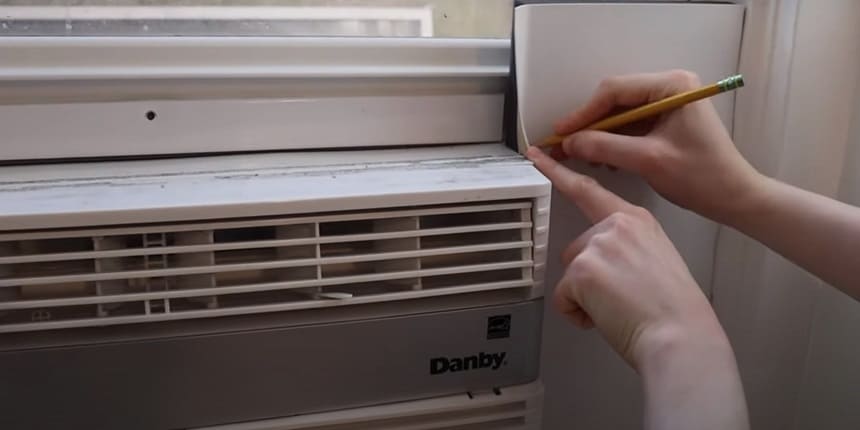
It’s essential to inspect the covering material periodically for any damage that may compromise its effectiveness. Here are a few things to look out for:
- Cracks: Inspect the covering material for any cracks that could allow dust or moisture to enter the unit.
- Tears: Check for tears or holes in the covering material that might lead to insulation issues or decrease the unit’s efficiency.
- Discoloration: Notice any discoloration on the covering material, which may indicate sun damage or exposure to harsh weather conditions.
If you come across any damage or wear, it’s essential to address it promptly. While minor cracks or tears can sometimes be repaired with tape or sealants, significant damage may require the replacement of the covering material.
Replacing Or Repairing The Covering Material When Needed
If you find that the covering material of your window air conditioner is beyond repair, it’s crucial to replace it to maintain the integrity of the unit. Here are the steps to follow:
- Measure the dimensions of the covering material that needs replacement.
- Choose a suitable covering material, ensuring it’s compatible with your air conditioner model and provides adequate protection.
- Carefully remove the existing covering material, following any instructions provided by the manufacturer.
- Install the new covering material, making sure it fits snugly and securely, with no gaps or loose areas.
- Secure the covering material in place using any clips, screws, or fasteners provided.
By replacing or repairing the covering material when necessary, you can ensure the longevity and efficiency of your window air conditioner.
Additional Considerations For Covering Sides Of Window Air Conditioner
The coverings for the sides of a window air conditioner are essential for maintaining the efficiency and functionality of the unit. In addition to protecting the internal components from dirt and debris, they can also enhance the overall appearance of the air conditioner. However, there are a few additional considerations to keep in mind when covering the sides of a window air conditioner to ensure optimal performance.
Ensuring Proper Ventilation And Airflow
One of the primary considerations when covering the sides of a window air conditioner is to ensure proper ventilation and airflow. The coverings should not obstruct the airflow around the unit, as this can lead to decreased cooling efficiency and potential damage to the air conditioner. To ensure proper ventilation, it is important to choose a covering material that allows air to pass through easily. Some popular options include mesh, perforated metal, or clear plastic covers.
Obeying Local Regulations And Guidelines
Before covering the sides of a window air conditioner, it is crucial to check and adhere to any local regulations or guidelines. In some areas, there may be specific rules regarding the use of coverings or modifications to air conditioning units. These regulations may focus on safety requirements for proper installation, fire codes, or noise ordinances. By following the local guidelines, not only will you ensure compliance with the law, but you will also prevent any potential damage or safety hazards.
Taking Weather Conditions Into Account
Lastly, it is essential to take the local weather conditions into account when covering the sides of a window air conditioner. Extreme weather, such as heavy rain, strong winds, or excessive sunlight, can impact the performance and longevity of the unit. To protect the air conditioner from these conditions, consider using weather-resistant coverings or adding additional layers of protection, such as UV-resistant films or waterproof covers. These precautions will help safeguard the air conditioner and prolong its lifespan.
How & Why Cover Window Air Conditioner
How Can I Cover The Sides Of My Window Air Conditioner?
To cover the sides of your window air conditioner, you can use foam insulation panels. These panels can be cut to fit the sides of the unit and help to insulate the area. Additionally, you can use weatherstripping to seal any gaps between the window and the air conditioner.
Why Should I Cover The Sides Of My Window Air Conditioner?
Covering the sides of your window air conditioner helps to improve energy efficiency. By insulating the sides of the unit, you prevent hot air from entering your home and cold air from escaping. This can help your air conditioner run more efficiently and save you money on energy bills.
Can I Use A Fabric Cover To Cover The Sides Of My Window Air Conditioner?
While fabric covers can be used to cover the exterior of the air conditioner, they may not provide sufficient insulation for the sides. It is recommended to use foam insulation panels or weatherstripping to properly cover and insulate the sides of the unit.
This will help improve energy efficiency and protect the air conditioner from outdoor elements.
Final Verdict
Covering the sides of your window air conditioner is a simple yet effective way to improve its efficiency and prevent unwanted drafts. By following the steps outlined in this guide, you can ensure that your air conditioner is properly insulated and protected from the elements, resulting in lower energy costs and increased comfort in your home.
Implementing these methods is a small investment that can yield big returns in terms of energy savings and overall air conditioner performance. So, don’t wait any longer – give your window air conditioner the coverage it deserves!
